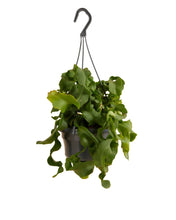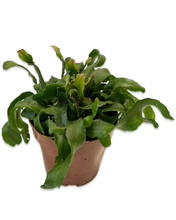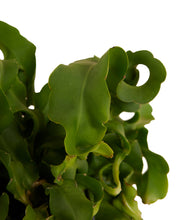
Epiphyllum hookeri is part of the Cactaceae family and its native range is Guatemala, Hondura and Mexico. The plant mutated and produced curled stems, this plant has been cultivated and is known as Epiphyllum hookeri subsp. guatemalense (syn. Epiphyllum guatemalense 'Monstrose'). This Epiphyllum produces large white flowers which are night blooming.
Genus' name comes from the Greek ‘epi’ meaning ‘upon’ and ‘phyllo’ meaning ‘leaf’; it was thought that the flowers emerged from a leaf but those leaves are stems. Specific epithet is pseudo-Latin manner for any of several naturalists named Hooker, especially Joseph Dalton Hooker or William Jackson Hooker.
Light: Bright indirect light, meaning the plant sees the sun for 0-4 hours per day - this could be through trees or a translucent curtain, it’s important for the plant to see the sky in order to thrive. In its natural environment this plant would receive dappled light.
Water: Allow the majority of the mix to dry out. Before watering, ensure the substrate isn’t compacted, if it is, aerate it with a few pokes of a skewer or blunt stick, pour water slowly over the top and allow the water to pass through the drainage holes.
Potting mix: A well draining mix composed of coco coir, perlite or vermiculite, orchid bark and worm castings; you could also add some horticultural charcoal to this epiphytic mix.
Fertilising: Feed your plant with a cactus fertiliser every other watering during the growing season or when you observe active growth. You can dilute fertiliser to half the recommended amount but never add more.
Temperature: 18-26°C, no lower than 12°C.
Humidity: Epiphyllum would prefer higher humidity but do well to adapt to average home humidity. You can increase humidity by placing the plant on a watered pebble tray or using a humidifier.
Epiphyllum hookeri is non-toxic.








